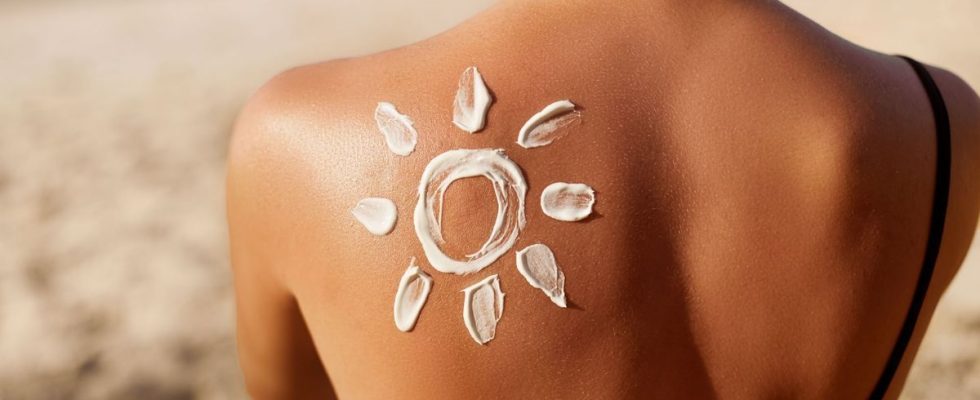Published on
Updated
Reading 3 mins.
It’s the return of sunny days and sun exposure, more or less protected. Doctissimo invites you to take stock of received ideas about how to protect yourself from the sun, which is responsible for 80% of skin cancers.
Protecting ourselves from the sun has become a reflex for many of us, but certain misconceptions persist and can be dangerous. Let’s take stock with the association Sécurité Solaire, on the main misconceptions about sun exposure and protection.
“The sun is dangerous when it’s hot, you have to protect yourself during the hot hours”
To this received idea, Solar Safety recalls that “UV intensity is not correlated with outside temperature”. Obviously, high temperatures can be dangerous for health but they are not related to the intensity of solar radiation. “The sun is not more “active” or powerful during heat waves. Moreover, during a heat wave, the temperature peaks are observed rather around 4 or 5 p.m., when the UV rays have already been declining for a while and are no longer very strong. It is these solar UV rays that are responsible for the harmful effects on health, in particular sunburn. But these rays are “cold”, they do not cause heat” she recalls again.
Be careful at sea or in the mountains too, where the feeling of freshness can be deceiving…”The good indicator to know if there is a risk or not to be exposed to the sun, is therefore the size of the shadows. When they are short there is danger, whatever the temperature”. As a reminder, children under the age of 3 should never be exposed to the sun and protect themselves on sunny days, during outdoor activities.
“If there are clouds, I risk nothing”.
“Tout depends on the type of cloud” insists Solar Security. “When the “sky is low”, the clouds are thick and dark, no need to worry, more than three quarters of the rays are absorbed by the clouds and do not reach the ground. soil is weak or non-existent. No need for protection for the vast majority of the population”.
“Conversely, when the sky appears ‘cloudy’, you have to be very aware that despite the impression of security (it’s less hot, the brightness is attenuated), UV radiation can be very high. This type of cloud filters very little UV“.
“To protect yourself, you have to cream, cream and cream”
Before thinking about sunscreen, you must first “identify risky situations. Then you must first look for shadow areas, wear a wide-brimmed hat, enveloping sunglasses (cat. CE 3 or 4), covering clothes, rather light and loose, possibly anti-UV for water sports or very long exposures to strong or extreme radiation” says Solar Security. “Finally, and only finally, it is necessary to cream carefully where the clothes do not cover, with an IP30 cream, possibly 50 or 50 + for extreme conditions”.
“To protect yourself from UV, you have to wear dark clothes”
“A white cotton T-shirt has a protection factor of around 10, that is to say it divides by 10 the quantity of UV rays received by the skin. It therefore lets 10% of UV rays through and blocks 90% of them, which is excellent protection, sufficient for almost everyone in almost all conditions. For the same dark T-shirt, the protection index can rise to 20, i.e. 5% of UV rays which pass and 95% which are stopped”. The protection index when wearing dark clothing is therefore slightly improved, but the body temperature can rise considerably! Watch out for heatstroke in these conditions. It is better to favor light and loose clothes.
